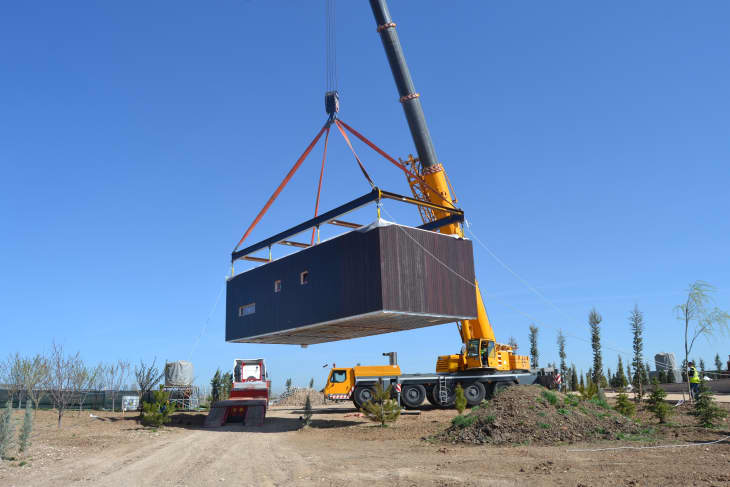What Is a Modular Home — And Should You Buy One?

A modular home is a house that is built in a factory and moved to its building site in sections. Once there, the sections are connected and the home is placed on a permanent foundation.
At the same time, these properties can often referred to as prefabricated or pre-fab homes. This terminology can be confusing, because manufactured and mobile homes are also prefabricated and built in a factory before being moved to the job site. The terms “modular home” and “manufactured home” are also commonly used interchangeably, even though they are built differently and are subject to different regulations.
If that was a lot of information up front, let’s take a step back and go a bit slower. To help you keep track of it all, especially if you’re in the market, read on for a breakdown of each term and answers to three common questions.
Modular Home
Definition: A home built in a factory that is moved to the building site in multiple pieces, completed on-site, and set on a permanent foundation.
Interchangeable terms: Prefabricated home or prefab home.
Manufactured Home
Definition: A home that’s completed in a factory and moved to the building site in one piece. It’s built on a chassis.
Interchangeable terms: Mobile home, prefabricated home, or prefab home.
Prefabricated Home
Definition: A home built either entirely or partly in a factory, and then moved to the final building site.
Interchangeable terms: Prefab home, modular home, manufactured home, or mobile home.
What is the difference between a “modular” home and a “traditional” home?
A modular home is built in a factory while a traditional home is built on the building site. But regardless of where they’re built, a modular home and traditional home must follow the same local, state, and national building codes. They are also treated the same by banks when an owner finances or refinances the property, and they appreciate in the same way.
Because modular homes have to be transported, they are actually built stronger and contain up to 30 percent more building materials than a similar traditional home, so they can handle any bumps in the road — literally and figuratively.
In a report by FEMA that assessed modular home and site-built home performance after Florida was hit by Hurricane Andrew in 1992, they found that modular homes were better able to stand up to the Category 4 storm with winds that reached speeds of 131 to 155 m.p.h. They concluded that, “the module-to-module combination of the units appears to have provided an inherently rigid system that performed much better than conventional residential framing.”
Another difference between modular and traditional homes is the time it takes to complete construction. It can take between six months to over a year to complete a traditional on-site home, but modular construction can be completed in as little as six to eight weeks — depending on the availability of supplies, labor, and the building company’s schedule.
What makes a home modular?
A modular home is a home that is built in a factory and moved to the final site in multiple “modules,” or sections. Once on-site, the sections are connected and set on a permanent foundation. Because nearly the entire building process is completed indoors in a factory, construction can be streamlined and isn’t disrupted by environmental conditions.
Are modular homes worth the money?
Modular homes appreciate just like traditional homes but typically cost less to build and boast better energy efficiency and stronger construction. Their floor plans, size, and interior finishings can be customized much like a traditional home, and they take less time to complete. For these reasons, it’s likely that a modular home is worth the money. But it’s always important to do your own research and talk to builders in your area before making a decision.